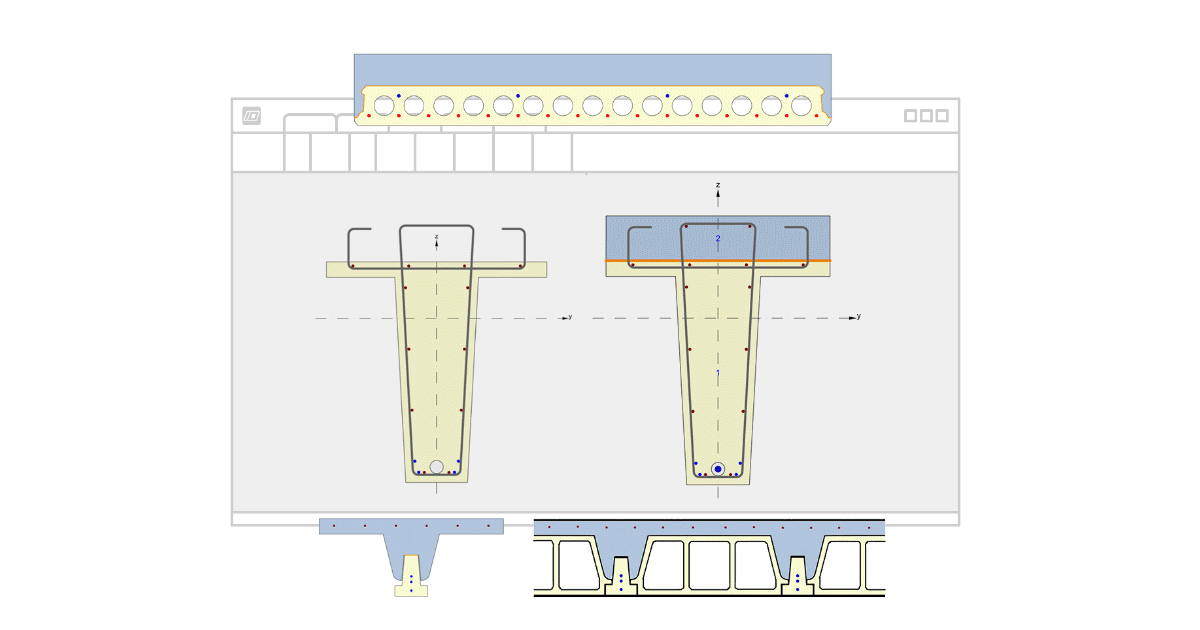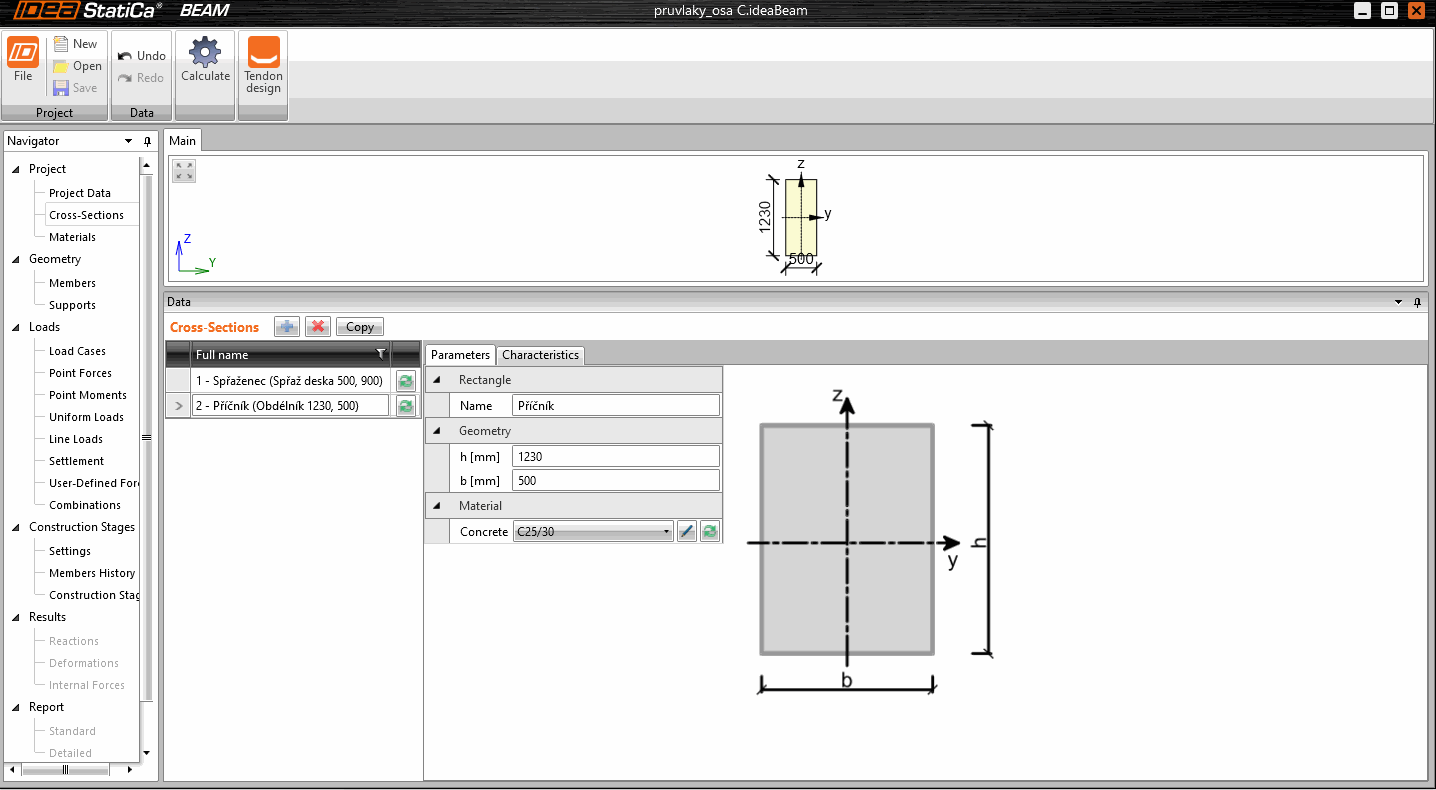Composite structures captured step-by-step
Do you deal with concrete structures consisted of composite members? Do you need to analyze composite beams of type concrete-concrete? Do you puzzle over the design and code-checks of pre-tensioned beams interconnected with cast-in-situ slabs? Do you need to combine pre- and post-tensioned tendons or just two different concrete classes in the cross-section?
If so, IDEA StatiCa is the right tool for having your problem solved!
IDEA StatiCa Beam
Structural engineers are quite often challenged with a task when two concrete composite parts of a beam are cast at different times. This automatically means having a different modulus of elasticity, consecutive load application. In such case, differential creep and shrinkage cause unequal strains and stresses in two adjacent fibers of the construction joint. Thus, the requirement is to ensure that both parts act fully compositely because the bending and shear designs of composite members are based on this assumption.
IDEA StatiCa Beam is the best application on how to model, design and code-check reinforced or prestressed composite beams.
Modeling
Your modeling process of the composite structure would most probably start with the cross-section shapes. There are several types of typical composite cross-sections available.
If you do not find a suitable cross-section, you can always use the powerful feature of IDEA StatiCa - general cross-section. You can analyze any shape of a cross-section, even a composite one.
Load cases
Besides load cases automatically added by the wizard, such as self-weight, superimposed dead and variable load, user-defined forces can be applied on the composite beam, known from your FEA software. Via xml file, you can import internal forces corresponding to temperature and moving load effects defined in FEA software.
Another load case might be represented by prestressing. You design both, pre- and post-tensioned tendon layouts in the IDEA StatiCa Tendon application where you can tune up the final layout and numbers of tendons, checking the equivalent load, prestressing losses, and linear stresses along the length of the analyzed beam. Find out more info on how to define and modify tendons.
Construction stages
The final step done in the wizard is the definition of construction stages. The time axis, aging of the concrete, construction stages of the structural scheme are defined in wizard. Of course, additional stages can be defined or you might edit the existing ones.
Analysis & Results
When you have the construction stages defined, the time-dependent analysis (TDA) can be performed. After the calculation, the IDEA Statica Beam application will provide you with the full scope of results for reactions, deformations and internal forces.
Concrete Design
Results obtained in the previous step are used for the concrete design. In general, all construction stages can be checked. You can select from a wide scope of ULS and SLS checks:
- Capacity N-M-M, Response N-M-M
- Shear, including shear stress check at the construction joint of the composite section
- Torsion
- Interaction
- Stress limitation
- Crack width
You will also specify the reinforcement of your cross-section in this step.
Reporting
Not to forget, the last usual step in every project is preparing a complex report. IDEA StatiCa Concrete generates and compiles ultimate and serviceability limit state checks into fully scalable and customizable reports, both .docx and .pdf format.
More about composite structures
If you would like to know more about concrete composite bridges, check out our webinars focused on this topic.
Webinar – Continuous composite bridge I
Webinar – Continuous composite beam II
Advanced content on composite concrete structures
If you prefer more advanced content on this topic, you can dive deeply into implemented algorithms and code-checks of concrete composite sections in one of our scientific articles "Eurocode Design of Composite Concrete Beams".
Or you can find out how to define a plane of strain of composite section manually in IDEA StatiCa RCS.
Sample projects
Do not forget to visit our gallery of projects where some of them are solved as composite sections combing reinforced and prestressed concrete.
Summary
If you often deal with composite concrete beams in your project, the IDEA StatiCa Beam application might be the right tool to help you with that. So, don't be afraid of testing and launch your FREE trial version to investigate the possibilities of composite concrete structures modeled and code-checked in IDEA StatiCa.










